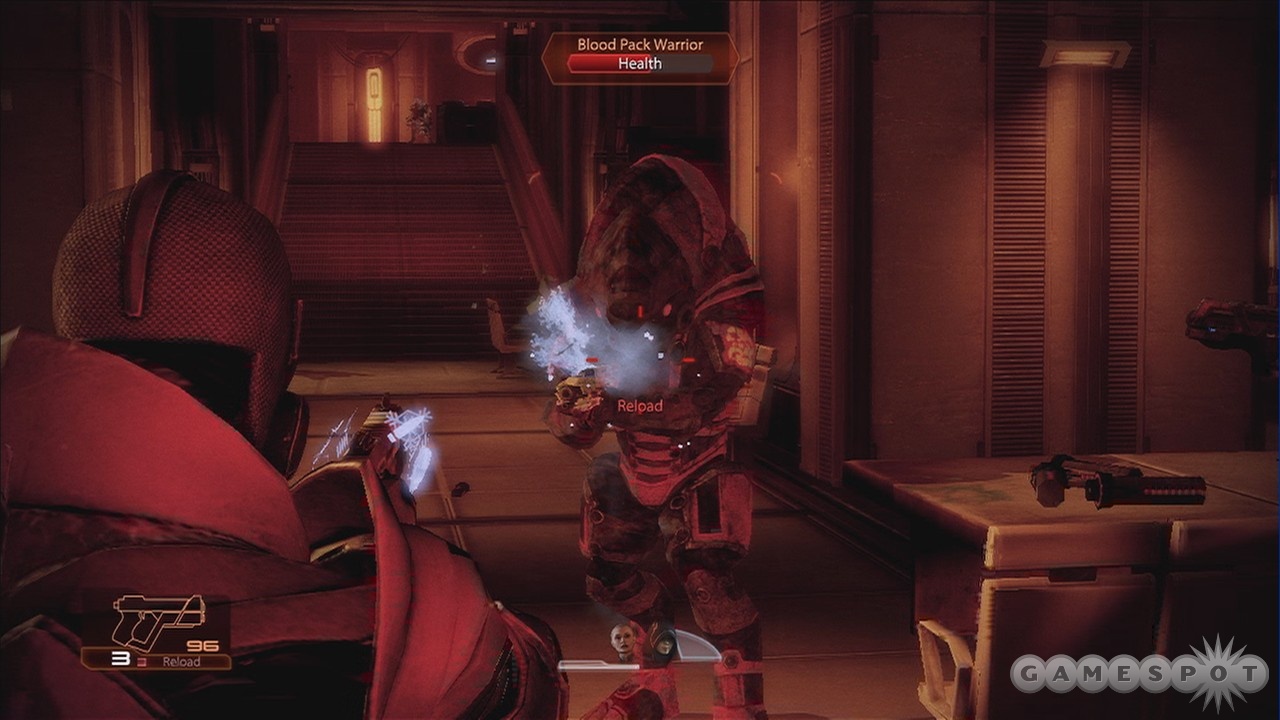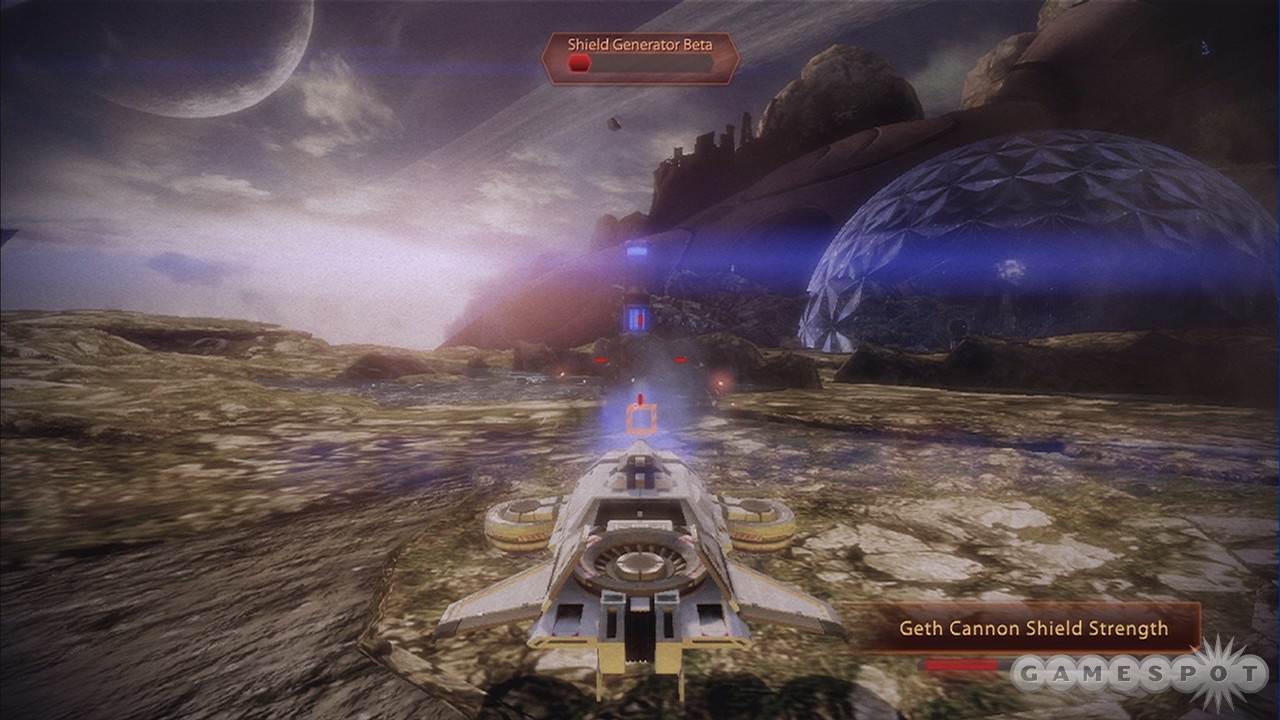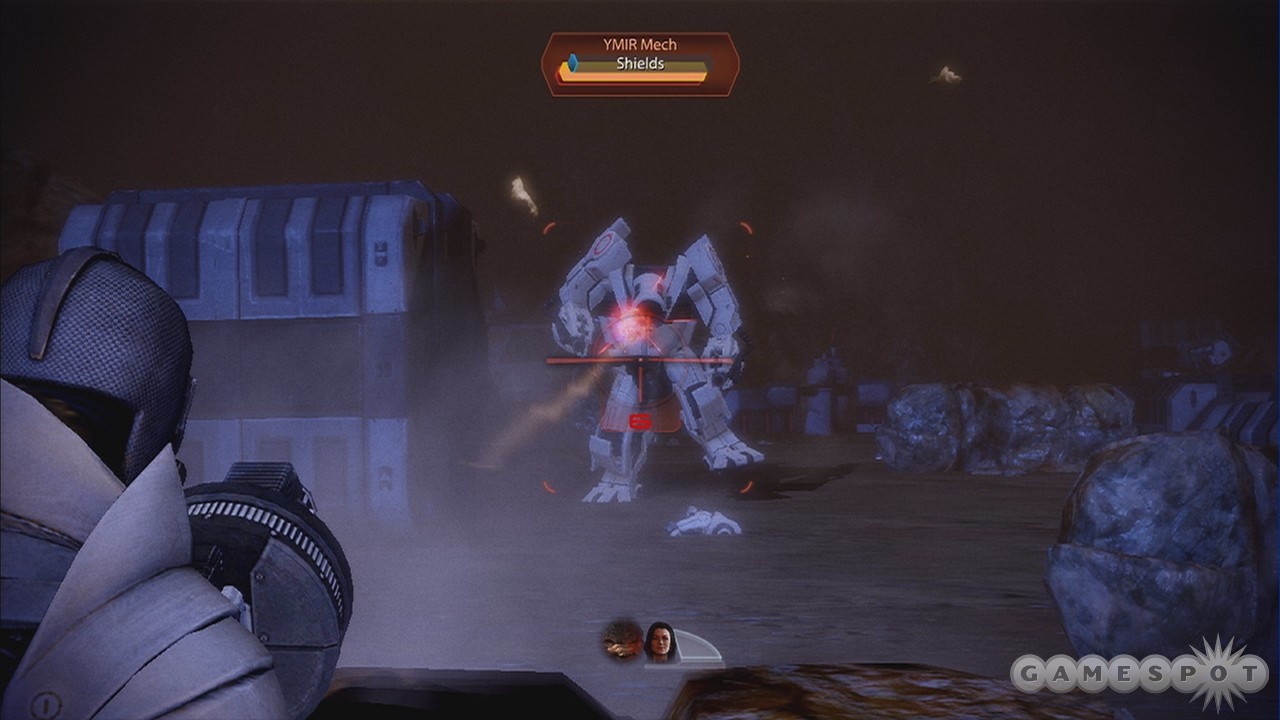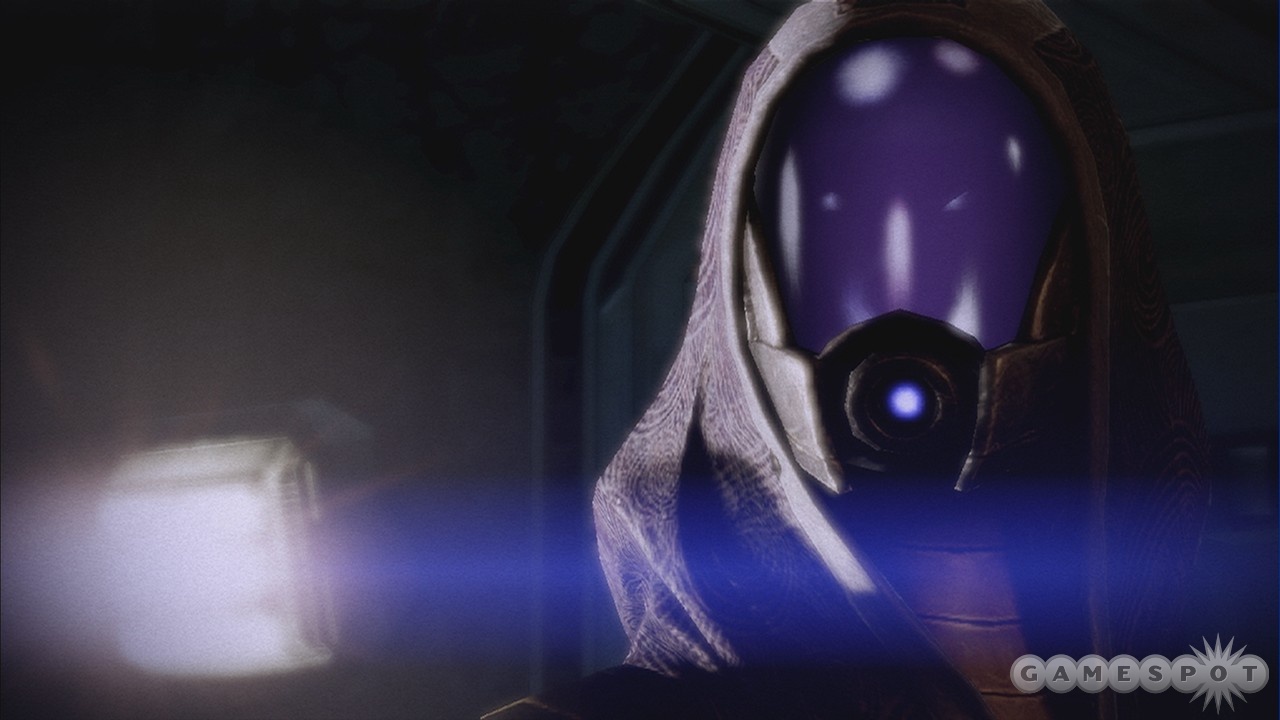Some would call it a role-playing game with an emphasis on its shooting action; others would call it a third-person shooter with RPG elements. Whatever you might call it, Mass Effect 2 was one of 2010's finest games--an elegant mixture of exciting battles, sharply written characters, and stunning visual art. PlayStation 3 owners should rightfully be excited to finally see their own version of this excellent game, though series hero Shepard hasn't received the VIP treatment the character deserved. Some frame rate troubles and other technical flaws specific to this new iteration keep it from being the go-to version of a game released without such troubles a year ago. The flaws aren't what you notice most when you play this escapade across the galaxy, however; rather, what stands out is how each element of the game works together to draw you into a universe you don't want to leave. The addition of content released as downloadable add-ons for previous versions makes the newest release an excellent value. This content includes the shrugworthy Mass Effect 2: Kasumi - Stolen Memory mission pack, as well as the entirely wonderful Overlord and Lair of the Shadow Broker missions. If you haven't yet been able to play Mass Effect 2, this is your latest chance to take to the stars and discover the mysteries of the Milky Way.
On the Xbox 360 and PC, one of Mass Effect 2's most interesting features was that it allowed you to import your Mass Effect character and save file. Certain plot points in the sequel then played out according to decisions you made in the original. PlayStation 3 owners don't get to experience this delight because the original did not appear on the platform. To help fill in the necessary gaps, you can download a free interactive comic using the one-use code included in the retail packaging. It looks great, and the narration is emotive and dignified. The comic prompts you to make the same significant decisions you could make in the original Mass Effect, using the radial dialogue wheel seen in the rest of the game. It's unfortunate that some players will either miss or have to pay $15 extra for the only content unique to this version because it isn't included on the disc. Luckily, the packaged code gives you access to other free content that was also released for other platforms, such as the short Firewalker mission pack.
Mass Effect 2 begins with dire events that foreshadow the game's dark tone--an attack that leaves your ship in pieces and the fate of protagonist Shepard temporarily unclear. Never fear: Shepard returns, thanks to the efforts of the controversial pro-human organization called Cerberus and under the watchful eye of its chain-smoking overseer, The Illusive Man. Entire human colonies are disappearing without a trace, and Cerberus needs you, as Shepard, to investigate and confront the vicious forces behind the mystery. Whether you make your contempt for the organization's questionable methods clear or espouse its manipulations, you owe The Illusive Man your life. Like it or loathe it, he casts his shadow on every action you take.
A race of locustlike beings known as the Collectors cast an even larger shadow, and the threat they pose is greater than it may first appear. Cerberus wants you to assemble a formidable team to assist and provides you with two human officers of its own. First, there is the sexy and detached Miranda. Then, there is Jacob, who seems initially reticent but allows his emotional fire to burn more brightly as the journey progresses. One by one, you build up your crew of specialists, which represent a number of the fascinating alien races that inhabit the galaxy. Among them are a stoic blue-skinned Asari named Samara, whose ethical code is as unforgiving as it is inflexible, and Thane, a brooding assassin who belongs to the reptilian Drell race. These are great characters, as are other members of your team, though the Salarian scientist Mordin Solus is possibly the finest character in Mass Effect 2 and is among the most interesting in any modern RPG. His ultracaffeinated, ultralogical delivery is often hysterical and always entertaining (his romantic advice will have you in stitches), but his moral misgivings and humaneness make him more than just comic relief. First-class dialogue, outstanding facial animations, and expressive voice acting lead you to care about your crewmates. The main plot is typical science fiction, but most of these fantastic characters keep you emotionally invested in your space trek from beginning to end.
One of Mass Effect 2's finest features is how its mission structure and character development are intertwined. After their initial recruitment, each of your comrades offers a quest of his or her own to undertake, and these missions give you a lot of insight into your crew members--even those, like Jacob, who seems rather boring initially. Not all of these missions involve combat, which doesn't always work in the game's favor; one in which you follow your target from a walkway overhead is one of Mass Effect 2's weaker moments. But even the rare missions that are light on thrills are still heavy on character development. Familial relationships are a common theme in these missions, but the gameplay variety and story specifics keep this repeated subject from wearing out its welcome. One such mission is particularly haunting because a decision you make at its conclusion has a lasting effect on the composition of your crew. The weak link in this otherwise superior setup is Kasumi, the master thief added to last year's versions as part of the Stolen Memory downloadable content. While you get to know your other teammates during the course of two full acts, Kasumi joins you on the Normandy SR-2 after a too-brief introduction. As a result, she never fits in with her more fully developed cohorts.

Conversations commonly present you with a number of responses that affect the meters representing two sides of an ethical spectrum: paragon and renegade. These meters are handled separately and do not represent sides of a single gauge. This structure makes a simple but important point: Morality isn't an either/or, good/bad attribute, but it allows for shades of gray in which to maneuver. As these meters fill, new conversation options open, giving you additional ways to solve dilemmas. These choices don't lead to the complexity and flexibility you see in RPGs like Fallout: New Vegas or Dragon Age: Origins, but they result in some electric moments, particularly during the final hours. One of the interactive dialogue's most interesting aspects is that of interrupt triggers. In certain cases, you may get a prompt allowing you to interrupt the scene. This may involve pulling a gun on an unsavory mercenary (a renegade action) or interrupting an old friend to offer a word of affection (a paragon action). These instances have a nice feeling of immediacy and inspire you to pay attention to conversations as they unfold.
Mass Effect 2's battles play out as they do in a typical cover-based shooter, with a few caveats (you can't tumble, for example). Sliding into cover is slick and easy, as is popping in and out to take potshots at the wide variety of foes that assault you. The cover system isn't as immaculate as you would find in a straight-up shooter; you may get stuck on an invisible obstacle and jitter back and forth, for example. Uncommon bugs aside, Mass Effect 2 works well as a shooter, though what really energizes combat are the combat, tech, and biotic powers you perform. When creating your character, you don't just select a gender and customize your appearance: you also choose from one of six classes that determines which abilities you might perform in combat. Depending on your class, you might send enemies flying helplessly through the air or smash into them with a full-body charge. You can also command the two squad members that accompany you to do the same from a simple radial menu. Your cohorts aren't always intelligent; they might stand on top of boxes rather than take cover behind them, for example. But they are rarely a liability, and you can command them to take a particular position if you prefer.
Mass Effect 2's missions take place across a wonderful variety of locales, from the creepy interior of a derelict vessel to a deep-space prison. Some of them refer to this universe's ongoing racial tensions, such as one in which you must assist a Quarian wrongfully accused of theft. Others, such as a brief high-speed vehicle chase, vary the pace and keep the action fresh. You also face various bosses, from a fast-moving Asari to a giant thresher maw. Many of these battles are great fun, though it's a shame that the disappointing final boss doesn't put up much of a fight. Nevertheless, most levels are thoughtfully constructed, letting you charge from one cover spot to the next to unleash destruction. You certainly get an impressive array of devastating tools to that end, including a laser weapon that makes quick work of the wrinkled Krogans and mumbling androids that threaten you. Standard weapons (as opposed to heavy weapons) also support additional ammo types--such as incendiary ammo--which provide additional benefits. Besides, it's always enjoyable to watch an enemy explode into icy bits when using cryo ammo.
From a role-playing perspective, you might see Mass Effect 2 as somewhat stripped; you don't have a traditional inventory management screen, for example, where you would choose a weapon or item to equip. Instead, you select the weapons you want when you embark on a mission or from a weapons locker. You purchase or find universal weapon and armor upgrades, which are then transferred to the Normandy's science station, where you can apply them, provided you have enough mineral resources. If you want to change armor, you go to your personal quarters, where you can don the armor items you've obtained and personalize them with different colors and textures. Even character development is light for the genre. Team members don't earn many skills, and you could complete a thorough, 40-plus-hour play-through without reaching level 30. Mass Effect 2 doesn't boast the depth of a traditional role-playing game. The upside of this streamlined design is that you stay connected to the moment rather than have to pause to dig through endless inventory screens. Don't assume that you won't get time to shop for goodies or check out the sights and sounds at important space stations, however. You can still load up on upgrades and weapons on hub worlds or even grab souvenirs like model ships to show off in your quarters.

It's unfortunate that such a stellar game has made a not-quite-stellar transition to its new platform. The technical inconsistencies are most apparent in the Overlord sequence, in which you speed around in a land rover known as the hammerhead. The onboard computer invites you to drink in the beautiful scenery, but you are more likely to notice the frightful visual stutters as you zoom about. There are expanses here in which unsightly pixels cover the ground, as well as numerous areas in which you can fly inside the geometry. Frame rate inconsistencies are common and aren't limited to just these missions, though the most apparent hitches appear in the content released as DLC for the previously released versions. Other troubles are carryovers from other platforms. Don't be surprised, for example, if you rise helplessly into the air and become unable to move. Sadly, there is no way to recover from this bug other than to reload a previously saved game.
These flaws aren't enough to overwhelm Mass Effect 2's superb art design, however. Rich indigo lighting and brightly glowing lava saturate certain scenes, making them richer and more sinister. Subtle, moody lighting and carefully constructed camera angles give certain interactions great impact. For example, in one scene, your tattooed teammate appears as a black silhouette, which emphasizes her conflicting emotions. In another, extreme close-ups betray a minor character's true role in an ongoing mission. The electric, swirling atmosphere that envelops you in the Shadow Broker mission is particularly memorable and makes the battles occurring on the exterior of a sprawling vessel even more stimulating. The pulse of electronic music and strong red hues punctuate your visits to a deep-space nightclub. Textures look even more detailed on the PS3 than on the Xbox 360, though the aforementioned technical hitches and some surprisingly long loading times make it a less consistent product than the versions released in 2010.

This port isn't as impeccable as the game deserved. Nevertheless, Mass Effect 2 still shines on the PlayStation 3 for the very reasons that it shone on other platforms. It is fine entertainment, but it's more than just lasers and loadouts--it's an adventure that invites you to get lost in its world and draws you close to those that inhabit it. Your actions both in and out of battle have weight because you care about the consequences. Almost everything Mass Effect 2 does, it does with uncommon quality. Its missions are varied and smartly structured. Its atmospheric art design uses color and lighting to evoke mystery and tension. And its well-acted characters stay with you even when you've returned to our more ordinary version of the Milky Way.
